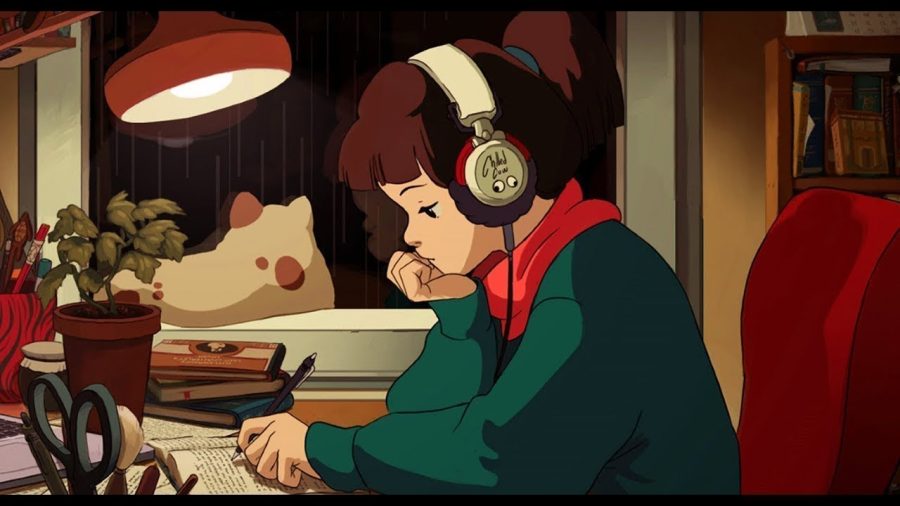While it may be overproduced, lo-fi gives us the feeling of nostalgia that we crave.
When I say “24/7 Lo-Fi Hip-Hop to Relax and Study To,” what do you think of? If the image of an anime girl wearing headphones dutifully doing homework immediately comes to mind, then congratulations! You might listen to lo-fi, or have at least seen the various YouTube streams with a mix of those words in it.
For those unaware, the prevalence of lo-fi has become sort of a cultural phenomenon that marks our generation. From memes of the anime girl spread around Twitter, the rise of lo-fi playlists on Spotify and Apple Music, and even “Lo-fi Study Jams” on the UC San Diego campus, lo-fi is present in our everyday lives, and it’s lead to the creation of a so-called “lo-fi aesthetic.”
So what does this aesthetic consist of?
First of all, the image. The popularity of the original YouTube channel sparked other decently popular YouTube streams, all of which feature a screencap from a beloved 90’s anime or other cute cartoon; these images have nearly become synonymous with the music style.
Musically, the lo-fi aesthetic is characterized by a “lower quality” sound, described as keeping the sonic mistakes that come up during recording. In a musical landscape where we award precise production and immaculate sound mixing, it’s refreshing to hear beats fizzle out and twangy, slightly out-of-tune ukulele strums.
As the self-proclaimed and proud indie-rock kid that I was my sophomore year of high school, I had no idea what lo-fi was when I first discovered the genre. But I liked it — really, really liked it.
I traded in my winding guitars, plucky bass, and raging drum solos for a downtempo beat, hints of crackly distortion, and easy rhythm. Fast forward to today, and putting on a lo-fi playlist when I sit down to do homework is just as necessary as having a pen — and I’m not the only one who feels this way.
I feel as though this is another aspect of lo-fi that attracts people — the humanity of its imperfections. It feels closer to us, more tangible, despite the irony of it being one of the most overproduced genres of music. And while lo-fi is a primarily instrumental genre, it does feature vocal loops that act as the “lyrics.” From utilizing mindless phrases to full-on excerpts from “The Fault in Our Stars,” what’s interesting about lo-fi artists now is their inclusion of these pop culture references, which arguably keeps lo-fi alive and changing. The genre transformed from nothing but looped beats to an actual backtrack used in other genres, like bedroom pop.
All this does is feed into our love of all things nostalgia, which is especially apparent in our time. With polaroids and disposable cameras coming back, vinyl record sales on the rise, and countless trends calling back to the 90’s, lo-fi helps to evoke those timeless, nostalgic feelings that we crave.
We’re a generation born just a bit too late to be lumped in with millenials, and born just a bit too early to be considered Gen Z. We have an obsession with relatability, to find a niche and fit in. And however superficial, overproduced, or meaningless that lo-fi may seem, it feels real. It feels like us.
However you may feel, I’ll be spending my next few years listening to some chill beats.
Image courtesy of YouTube.














